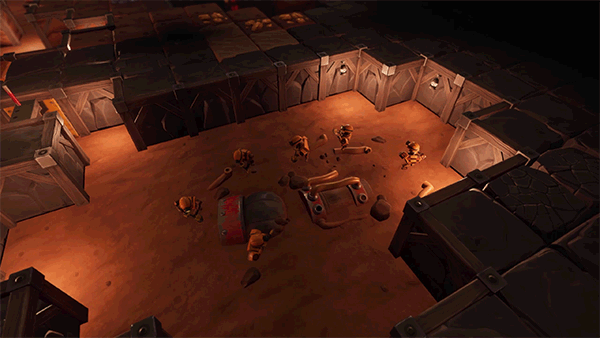Review | SteamWorld Build - Simulated Livin'
The Steamworld series is a fascinating mish-mash of genres showing the creativity and development prowess of the independent Swedish development studio Image & Form. The team have been crafting the series since 2010 with humble beginnings as a simple tower defence game on DSiWare. In 2020, Image & Form became big enough to co-establish Thunderful Group, giving it the opportunity to hand the reins of the series to a new studio, The Station.
SteamWorld Build is the first game in the series made by this new development team who have taken on an ambitious concept that combines and redefines genre norms. On the surface, Build mixes the fundamentals of city-building sims with the framework of Image & Form’s morish Dig sub-series. But, to me, it’s the linear structure and constantly evolving gameplay loop that forms through this combination that really makes Build stand out from its contemporaries.
Town needs a saloon.
There’s plenty of building and digging gameplay to satisfy fans of both casual management simulations and underground resource management games. Build might be an amalgamation of genres but it feels inspired by Bullfrog Productions, a studio that made accessible takes on the management genre with Theme Park and Dungeon Keeper. Distinct elements from these titles are packaged with a story, visual style and mechanics that feel true to the SteamWorld series.
A game of Build starts out on a deserted scrap of land where you’re tasked with making a small, self-sustaining city that is deemed functional once a citizen's needs are met. Supplies are required to satisfy citizens, which are obtained by gathering natural materials and creating a network of buildings that provide services to one another in a succinct manner. These two objectives implement different gameplay styles and come together to feed into a larger goal.
This requires building a town with houses, shops and services with pathways that ensure supplies get to citizens as quickly as possible. The robotic citizens can be upgraded to carry out more functions, but you’ll need to balance the needs of multiple citizen types to keep the city functioning with money and luxury goods.
Every town needs a…. glass blowing… cathedral….?
If you’re not familiar with city-building games, this process may sound complicated, but Build takes a page from theme park management games as players are tasked with making simple but functional layouts to satisfy citizen needs. This pairs nicely with the mining gameplay which takes the form of a simplistic RTS with base-building mechanics. Both of these components have automated elements so it’s surprisingly easy to switch between the two modes.
For the most part, the two gameplay segments are separated by objectives that railroad players into focusing on one at a time when necessary, but towards the end of a game, multitasking is required to ensure the city’s survival through its underground workforce.
When Build is focused on one gameplay style it can sometimes feel scripted, but this isn’t a bad thing. In fact, the rate at which new, robust systems are introduced is incredibly engaging and mimics the clever design seen in the Dig games. When the game gets more open-ended, challenges feel more satisfying to conquer, but the scope of challenges can feel aggravating to deal with at times. It’s a difficult balance going between these linear segments that feel very focused, and more sprawling sections that demand you to split your attention, and Build can’t always juggle all these balls.
Resource management is a big part of the gameplay loop as the city relies on a constant supply of materials and goods to function properly. There are multiple objectives tied to the upkeep of supply chains and citizens can temporarily quit their roles if a supply deficit occurs, it's one of the most important parts of the game and, luckily it functions well. But there is an annoying chain of events that occurs due to this system.
Is Satan down here building his dungeons too?
Upgrading citizens requires every one of their needs to be fully met, but supplies naturally fluctuate more and more as the city grows. On paper, this presents an interesting managerial challenge that rewards clever positioning, but in practice, the fluctuation is annoying as upgrade parameters can be met one second and lost the next, and Build doesn't give any maintenance hints to help with the process.
The difficulty spike is mostly offset by Build’s accessible design and pause button, but it is an annoying aspect to an otherwise exceptionally well-made and finely balanced management game that forces players to use every mechanic at the game’s disposal. There are a couple of small design decisions that really surprised me with their utility. Sand-sifting factories force cities to be spacious using structural pollution, and destructible bridges allow workers to cross unassuming chasms in the mines.
Oh no… I’ve played Nier: Automata. I know how this ends!
A special mention goes to the railway station which trades goods to the city every five minutes. At the start of a game, the railway acts as an overpriced shop that can be used to buy resources in times of desperation, but as a city expands, money and resources are easier to come by. But before long, the station becomes a consistently rewarding trading post that can be used to attain essential supplies.
SteamWorld Build is gratifying down to its very core, and its accessible city-building gameplay is broken up by a strategic and robust take on the Dig formula that lives up to a franchise known for its seamless design. The larger ambitions of Build occasionally cause cracks to form in its otherwise impeccably solid foundations, but these moments of instability are offset by a structurally sound experience that truly innovates on its respective genres.










